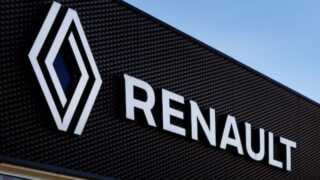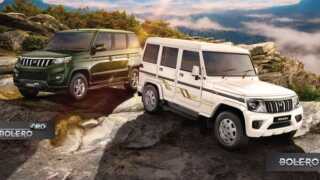At this point, year-by-year changes to electric vehicles are starting to follow a familiar template. You squeeze a bit more power out of the electric motors, you juice up the battery pack, you improve the charging system, and boom—you’ve got a more appealing product. Toyota is following this script with the 2026 bZ, a compact electric SUV that replaces the previous bZ4X, becoming a far more competitive model within the segment.The name change itself is the first notable tidbit, as it shows that Toyota is no longer committed to following an EV-specific naming pattern. The bZ moniker, which stands for “beyond Zero,” will be applied only to this model—now sans 4X—and the upcoming bZ Woodland, a longer and more outdoorsy SUV sibling built on the same platform. Otherwise, the U.S. arm of the company is abandoning this global naming scheme that, in China for instance, includes a whole range of bZ-badged products such as bZ3 and bZ7 with numbers and suffixes denoting size and body style. Future EVs, like the recently unveiled C-HR, will use familiar names from elsewhere in the Toyota portfolio.Regardless of what it’s called, the bZ remains twinned with the Subaru Solterra. This latest version undergoes a wholesale upgrade to its powertrain and other mechanical tidbits that addresses the previous bZ4X’s biggest shortcomings: limited range, uncompetitive charging times, and low power output. Range estimates are improved on most models, thanks to a slightly more powerful battery pack with an estimated capacity of 67 kWh. Maximum range climbs from a previous high of 252 miles to a claimed 314 miles for the new front-wheel-drive XLE Plus model. And charging improvements come courtesy of a more powerful onboard charger (11.0 kilowatts, up from 6.6) and a new NACS (North American Charging System) port that allows the bZ to use Tesla Superchargers, though its max draw rate on a DC fast-charger is still capped at 150 kW. More on the bZ LineupWe had the chance to drive the new bZ back to back with the old bZ4X, and the new model feels more sprightly and lighter on its feet. The new dual-motor, all-wheel-drive configuration is particularly quick. It’s not every day that you see a vehicle’s power output jump up by over 50 percent, but the new 338-hp setup absolutely embarrasses the outgoing 214-hp dual-motor configuration. We got the old AWD car to 60 mph in 6.3 seconds, and Toyota claims the new one can hit that mark in less than five seconds, which should put it in contention with other EVs in the class, including the all-wheel-drive versions of the Hyundai Ioniq 5 and Volkswagen ID.4. The improvements to the driving experience are not just because of the extra power, either. We also drove the new base front-wheel-drive XLE model, which makes do with only a 168-hp motor and a smaller battery with only 52 kWh of estimated capacity. Although it’s certainly slow, it illustrated that the updated bZ also rides and handles better than before. The steering effort is lighter and the suspension tuning firmer, leading to a more composed feel. If you opt for the XLE Plus or Limited FWD models, you get the bigger battery pack and a more powerful 221-hp front motor (up from 201 hp in the previous front-drive model). But unsurprisingly, the dual-motor car comes the closest to truly being fun to drive.
The bZ’s interior is improved as well, with a less obtrusive center console design and a more conventional digital gauge cluster binnacle in front of the driver. The seating position is still a bit weird, and the steering wheel can obstruct the view of the gauge cluster unless you adjust it a certain way. But overall, we like the new cabin more than the old one, as it feels airier and more spacious and also benefits from a larger center touchscreen.Overall, the bZ hasn’t undergone an entirely transformative update, but these numerous changes do bring Toyota into competitive territory with other compact electric SUVs. Before, the bZ4X lagged rivals in terms of objective numbers like range, performance, and charging times as well as in terms of the subjective driving experience. While the bZ is still not a class leader, it makes up a considerable amount of ground and, if priced right, could become a more relevant mainstream player. Plus, it’s no longer burdened with that clunky bZ4X name.SpecificationsSpecifications
2026 Toyota bZ
Vehicle Type: front- or front- and mid-motor, front- or all-wheel-drive, 5-passenger, 4-door wagon
BASE PRICE (C/D EST)
XLE, $42,000; Limited, $46,000
POWERTRAIN (FWD)
Motor: permanent-magnet synchronous AC, 168 or 221 hp
Battery Pack: liquid-cooled lithium-ion, 52 or 67 kWh (C/D est)
Onboard Charger: 11.0 kW
Peak DC Fast-Charge Rate: 150 kW
Transmission: direct-drive
POWERTRAIN (AWD)
Front Motor: permanent-magnet synchronous AC
Rear Motor: permanent-magnet synchronous AC
Combined Power: 338 hp
Battery Pack: liquid-cooled lithium-ion, 67 kWh (C/D est)
Onboard Charger: 11.0 kW
Peak DC Fast-Charge Rate: 150 kW
Transmissions, F/R: direct-drive
DIMENSIONS
Wheelbase: 112.2 in
Length: 184.6 in
Width: 73.2 in
Height: 65.0 in
Passenger Volume, F/R: 54/40 ft3
Cargo Volume: 26–28 ft3
Curb Weight (C/D est): 4100–4500 lb
PERFORMANCE (C/D EST)
60 mph: 4.8–7.8 sec
1/4-Mile: 12.8–16.2 sec
100 mph: 13.0–19.5 sec
Top Speed: 110 mph
EPA FUEL ECONOMY (C/D EST)
Combined/City/Highway: 93–115/95–100/85–105 MPGe
Range: 235–314 miDespite being raised on a steady diet of base-model Hondas and Toyotas—or perhaps because of it—Joey Capparella nonetheless cultivated an obsession for the automotive industry throughout his childhood in Nashville, Tennessee. He found a way to write about cars for the school newspaper during his college years at Rice University, which eventually led him to move to Ann Arbor, Michigan, for his first professional auto-writing gig at Automobile Magazine. He has been part of the Car and Driver team since 2016 and now lives in New York City.
Source: caranddriver.com










